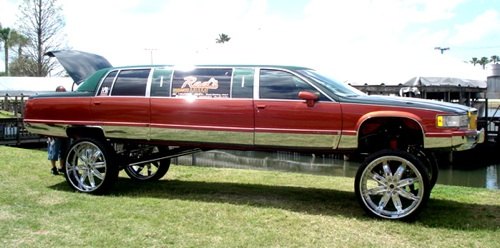Piston Slap: Kick Out the (Door) Jambs?

Dave writes:
While I understand that recommended tire pressure is located on the door jamb in a car, what happens when the factory tires are replaced, upgraded, down graded, replaced with used or even recaps where available (are re-treads even available?), different tread and wear and heat ratings?
What I am trying to ask is: are the manufacturer’s recommendations applicable only to the factory tires, or to non- original brand replacements as well?
Sajeev replies:
I haven’t seen passenger car tire re-treads in well over a decade, but that won’t change the answer: the factory pressure setting always applies.
Well, almost. I can think of a few exceptions: dynamic tuning in racing conditions, door jamb stickers on Nasser-era Ford Explorers, and a somewhat-misguided need for a smoother ride (lower) or fuel economy (higher). And maybe, possibly, from changing over to wheel/tires with a significantly different sidewall height.
Let’s focus on that last one. If you live in an area with terrible roads, but absolutely must have twankys on your Corolla and 26-inch rims on your Silverado, you might up the air pressure a good 1-5 psi to help low profile tires fight a bent rim. But that is a long shot, the extra air probably won’t matter to your run-of-the-mill frost heave.
So stick with what’s on the door jamb.
[Send your technical queries to mehta@ttac.com]

More by Sajeev Mehta


































Comments
Join the conversation
OK, B'n'B, how about this: Take a '75 LBC (that came with radials, originally) and look at the factory specs that ask for 20/22 psi and try to mate new'ish tires that ask for 30-35 psi. Who do you trust? 1970's technology or the manufacturer? The car weighs 2600 lbs, (less rust: add Bondo). Chuck G., anyone, any thoughts?
According to physics Pressure / Temperature = constant with Temperature in kelvin You can go much closer to 40 psi to have a save margin for heat.
I used to run my tires at the door placard pressure, but now I run them at the sidewall max pressure on the tires, 44psi. Why? Well, on passenger cars, steel belted radials don't bulge out in the middle of the tread like they want you to think. The manufacturer of the tire is gonna know more about that particular tire than the car manufacturer. So if they say it's safe to go up to 44psi cold, then that's where I'm going. What happened once I did that? Fuel economy increase of about 3% is one thing. Other than that, the tires are supposed to last a little bit longer. Final thoughts, you'll be fine at door placard pressure, but what about a month later when your psi's dropped to 26. That's when you start getting sidewall flex, and that's dangerous.
wannabewannabe: That's what I have wondered since putting radials on my 63 Valiant. I usually keep them at 34 psi. The Bias plys were something like 28. Maybe. It's been so long now I can't remember.But the change to radials makes the bloody thing grip like a tractor. I avoided the change over because many years ago I was told that "putting radials on a car that wasn't designed for them would destroy the steering system". That must be one for the "urban legend" files. What did I know, I was just a kid when I heard that.